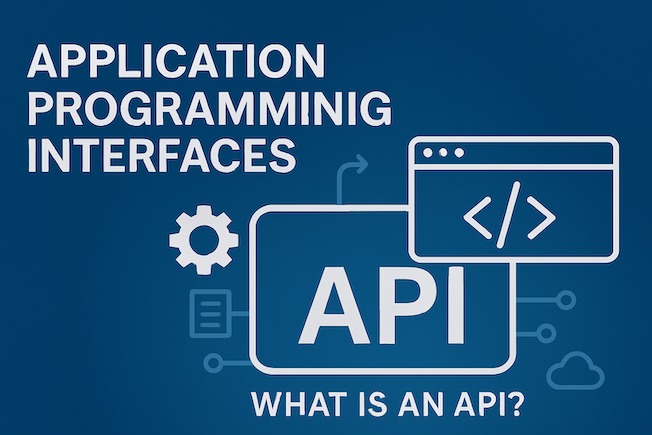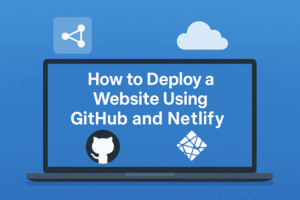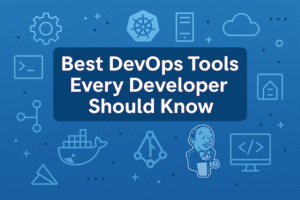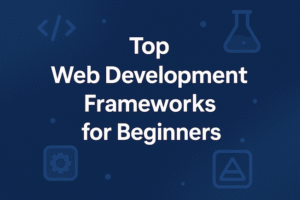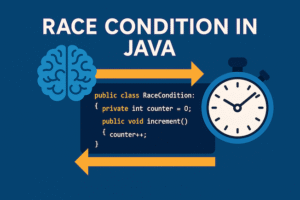What Is an Application Programming Interface?
An Application Programming Interface (API) is a structured way for different software systems to communicate. In simple terms, an API acts as a bridge between applications, allowing them to share data and functionalities.
When you define APIs, you’re setting up a standardized way for software components to interact without exposing the underlying code. This makes development faster, more secure, and more scalable.
Many developers today use open application programming interfaces to build integrations, automate workflows, and connect cloud-based services. In other words, APIs are the backbone of modern software ecosystems.
Application Programming Interface Meaning
Let’s explore the application program interface meaning in real-world terms. Imagine you’re using a mobile weather app. That app doesn’t generate weather data on its own — it calls an open application programming interface that retrieves real-time data from a weather service.
Similarly, when you sign into a website using your Google or Facebook account, the site uses the Google Application Programming Interface or Facebook API to verify your identity securely.
This abstraction layer allows developers to access complex features (like authentication or data retrieval) through simple, standardized API calls.
Define Application Programming Interface and Its Types
When you define an Application Programming Interface, it’s important to understand that there are several types of APIs, each designed for specific use cases:
- Open APIs (Public APIs): Available for external developers. Example: Google Maps API.
- Internal APIs (Private APIs): Used within an organization to connect internal systems.
- Partner APIs: Shared with specific business partners for integrations.
- Composite APIs: Combine multiple APIs into a single call for efficiency.
Each of these plays a role in how modern applications interact and exchange information.
REST Application Programming Interface
One of the most common types is the REST API (Representational State Transfer). REST APIs use standard HTTP methods such as GET, POST, PUT, and DELETE, making them lightweight and web-friendly.
For instance, when a developer sends a GET request to a REST endpoint, the REST API returns structured data — usually in JSON format. This simplicity makes RESTful APIs ideal for web, mobile, and IoT development.
What Is an API (Simple Definition)
If you’re new to the topic and wondering, “What is an API?”, think of it like a restaurant menu. The menu tells you what dishes you can order, and the kitchen prepares the food behind the scenes. Similarly, APIs provide a list of available operations, while the underlying system handles the logic invisibly.
This means you don’t need to know how a server or database works internally — you just use the API endpoint to get what you need.
Examples of Popular APIs
Here are some well-known Application Programming Interfaces that have transformed modern software development:
- Google API: Powers Google Maps, Drive, YouTube, and Cloud integrations.
- X(Twitter) API: Allows posting, fetching tweets, and analytics automation.
- Stripe API: Enables secure online payments.
- OpenAI API: Used for AI-driven tools like chatbots and text generation.
- Oracle Call Interface: Connects applications with Oracle databases efficiently.
These examples show how APIs enable innovation by providing developers with reusable, scalable building blocks.
Open Application Programming Interface and Innovation
The rise of the open application programming interface movement has led to the explosion of cloud services, SaaS tools, and integrations. Companies now publish APIs so others can build on top of their platforms — a strategy that increases adoption and developer engagement.
APIs have also evolved into products themselves. For example, the REST API model allows businesses to monetize their endpoints, charging per request or per usage tier.
Why APIs Matter for Developers
For developers, APIs eliminate redundancy. Instead of reinventing the wheel, you can use an existing application programming interface to handle authentication, payments, or even AI tasks.
By understanding how to define API logic, developers can design modular, reusable systems that are easier to maintain.
In fact, APIs now form the basis of microservice architectures, where each service communicates through an API rather than a monolithic structure.
Conclusion
The Application Programming Interface (API) is much more than just a technical concept — it’s a core enabler of modern digital transformation. From REST application programming interfaces to Google application programming interface integrations, APIs continue to shape the way software evolves.
Understanding how to define APIs and use them effectively is one of the most valuable skills a developer can have today.
So next time someone asks “what is an API?”, you’ll know the answer — it’s the digital language that keeps our connected world running smoothly.
If you’re interested in learning more, check out this article: REST vs GraphQL: Which Should You Use?

